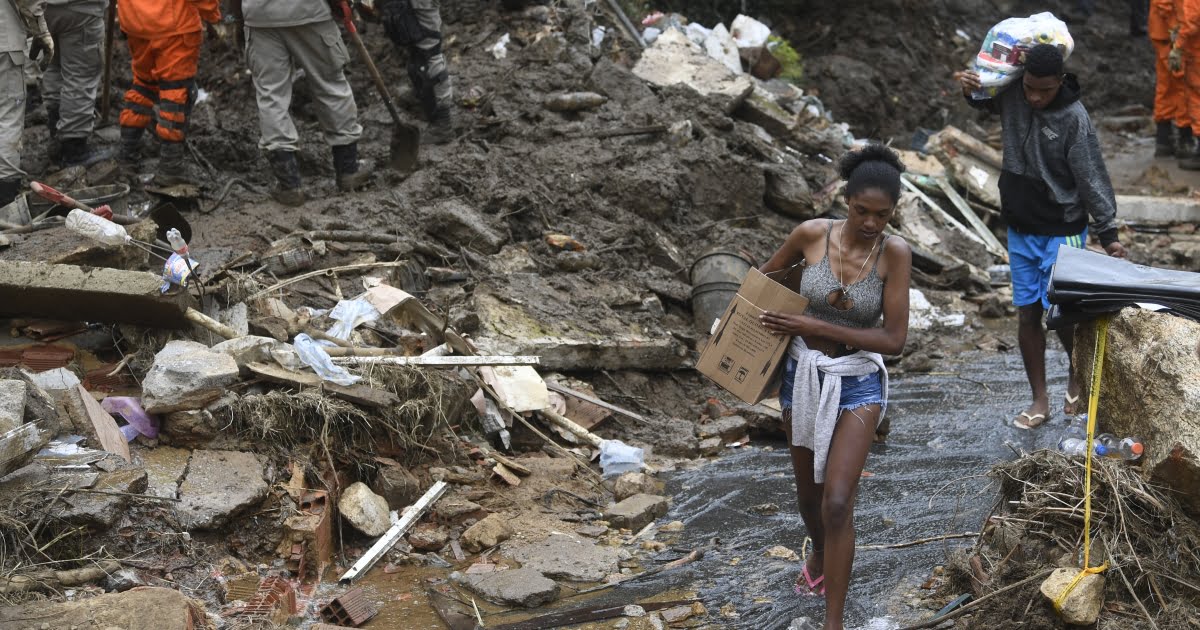Two days of heavy rain trigger flash floods and landslides in the Brazilian state of Rio de Janeiro.
Torrential rain has triggered flash floods and landslides in Brazil’s Rio de Janeiro state, killing at least eight people, including six children, and leaving 13 missing, authorities said on Saturday.
Two days of heavy rain have battered a wide swath of the southeastern state’s Atlantic coast, the latest in a series of deadly storms in Brazil that experts said are being exacerbated by climate change.
The latest flooding and landslides come six weeks after flash floods and landslides killed 233 people in the picturesque city of Petropolis, the summer capital of Brazil’s 19th-century empire, also in Rio state.
Among the hardest-hit areas this time was the tourist town of Paraty, a seaside colonial town known for its quaint cobblestone streets and brightly colored homes.
Officials there said Saturday a landslide in the Ponta Negra neighborhood killed a mother and five of her children, ages two, five, eight, 10 and 15.
A sixth child was rescued alive and taken to the hospital, it said.
A total of seven houses were swept away in landslides in the city and another four people were injured. Seventy-one families were evicted from their homes, officials said.
Two other victims were killed in the towns of Mesquita and Angra dos Reis, where another 13 people are missing, said Congressman Marcelo Freixo, who represents the state of 17.5 million people.
In Angra, the victim was a four-year-old girl who was buried in a landslide, while in Mesquita, 40 km (25 miles) northwest of Rio de Janeiro, a 38-year-old man was electrocuted while trying to hit another person to help escape floods, media reports said.
The storms turned streets into rivers in several towns on Friday night, sweeping cars with them and triggering landslides – a common rainy season tragedy, particularly in poor mountain communities.
Officials in Angra said the city received 655 millimeters (26 inches) of rain in 48 hours, “levels never before recorded in the community”.
The federal government said it has sent military planes to support local rescue efforts and has deployed national disaster preparedness minister Alexandre Lucas to the state.
Experts have said rainy season downpours in Brazil are amplified by La Nina – the cyclical cooling of the Pacific Ocean – and the effects of climate change.
Because a hotter atmosphere holds more water, global warming increases the risk and intensity of flooding from extreme rainfall.
In January, torrential rains in southeastern Brazil, mainly in Sao Paulo state, triggered floods and landslides, killing at least 28 people.
Heavy rains also fell in the northeastern state of Bahia, where 24 people died in December.

